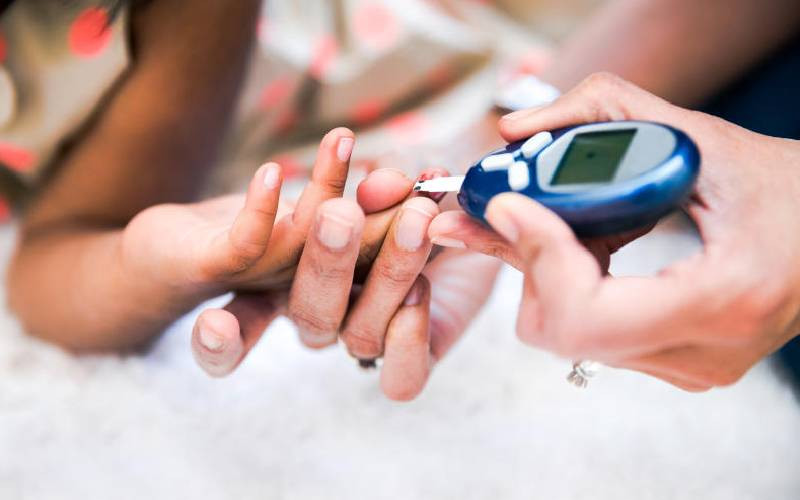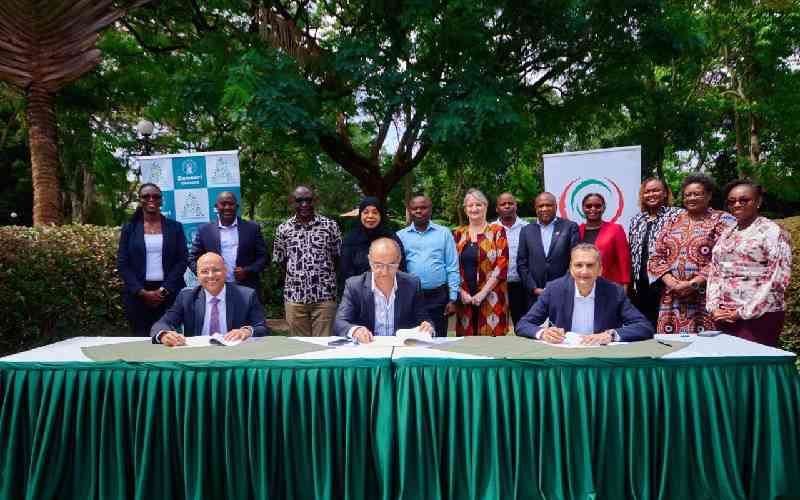
A mother checks her daughter's diabetes by monitoring blood glucose. [Courtesy]
Diabetes is often described as a silent condition because many people live with it for years without knowing. At its root is a problem with the way the body handles glucose, the sugar that fuels our cells.
Normally, insulin, a hormone made in the pancreas, helps move glucose from the blood into the body’s tissues for energy. When insulin is lacking or the body resists its effects, blood sugar builds up. Over time, the excess sugar damages blood vessels and vital organs such as the eyes, kidneys, heart and nerves.
There are three main types of diabetes. Type 1 is an autoimmune disease, where the immune system destroys the insulin-producing cells of the pancreas. It usually begins in childhood or adolescence, and those affected must take insulin daily to survive. There is no cure, and unlike Type 2, remission is not possible.
“Parents sometimes assume that diet can replace insulin in children with Type 1, but this is not true,” explains Prof Nancy Kunyiha, a consultant endocrinologist and diabetologist at Uzwena Health. “For Type 1, insulin is life-saving and must begin at diagnosis.”
Type 2, by contrast, is far more common, accounting for about 90 per cent of global cases. It develops when the body resists insulin or produces too little of it. Lifestyle factors such as excess weight, lack of physical activity and poor diets contribute strongly, though genetics also play a role. A third type, gestational diabetes, arises during pregnancy, usually disappears after birth, but leaves mothers at higher risk of Type 2 later in life.
There are other types and variants of diabetes that may present in non classical manner such as Drug induced Diabetes and Mody, which is hereditary
- Unbroken hope: Kipng'etich's fight with a rare urethral condition
- Diabetes, hypertension silent killers in rural areas - medics
- The sugar trap: How diet and fasting could reverse Type 2 diabetes
- Tired of rushing to the loo? Here's how to manage frequent urination
Keep Reading
The signs can be easy to miss. Excessive thirst, frequent urination, fatigue, blurred vision, unexplained weight loss or wounds that heal poorly are all red flags. Many people dismiss them until more serious complications appear.
“Screening is critical. Too many Kenyans are only diagnosed when complications have already developed,” says Dr Sairabanu Sokwalla, a consultant endocrinologist at Aga Khan University Hospital in Nairobi. Globally, diabetes cases have ballooned from 108 million in 1980 to more than 500 million today, according to the World Health Organization.
The International Diabetes Federation projects that the number could rise to 700 million by 2045, with Africa facing the steepest increase. In Kenya, between three and five per cent of adults, about 800,000 people, are estimated to live with diabetes, though experts warn the real figure may be double because so many remain undiagnosed.
In recent years, doctors have begun to speak of remission in Type 2 diabetes. Remission means blood sugars return to normal without medication and stay there for at least three months. It is not a cure, since levels can rise again, but it represents a window of control. “Remission can happen, particularly when diabetes is diagnosed early and the patient makes major lifestyle changes. But it must be confirmed with proper blood tests and monitored closely,” Kunyiha explains.
Not all patients can achieve remission.
“Not all patients require drugs at diagnosis, especially if diabetes is detected early. However, when sugars are very high or if there are co-existing complications, refusing medication can be life-threatening. We see patients slip into diabetic ketoacidosis, which can be fatal,” Kunyiha adds.
Weight loss is often the single most important factor.
“Weight loss achieved through lifestyle changes is strongly linked with remission. However, remission does not equal cure. Diabetes can recur if lifestyle is not rigorously maintained,” Sokwalla says, emphasising that remission must be pursued with medical guidance.
“Medication requirements vary from person to person. Some can manage on diet alone, but lifelong monitoring is essential,” says Sokwalla.
Clinical studies support this argument.
The United Kingdom’s DiRECT trial found that nearly half of patients who lost 10 to 15 kilogrammes were in remission after a year, but many relapsed when they regained weight. In Kenya, nutritionists are cautious about extreme diets that cut out entire food groups.
Nutrition experts urge caution against extreme diets that exclude whole food groups.
“Balanced meals are safer and more sustainable. Traditional staples like sorghum ugali, beans, sukuma wiki, arrowroots and sweet potatoes can keep sugars steady without relying on expensive or restrictive diets,” Kepha Nyanumba, consultant nutritionist at Crystal Health Medical Centre, says.
Not everyone will achieve remission, and for many, medication remains essential. What matters most is early detection, personalised care and ongoing monitoring. Doctors agree that HbA1c tests every few months, regular blood sugar checks and screening for complications are necessary.
 The Standard Group Plc is a multi-media organization with investments in media
platforms spanning newspaper print
operations, television, radio broadcasting, digital and online services. The
Standard Group is recognized as a
leading multi-media house in Kenya with a key influence in matters of national
and international interest.
The Standard Group Plc is a multi-media organization with investments in media
platforms spanning newspaper print
operations, television, radio broadcasting, digital and online services. The
Standard Group is recognized as a
leading multi-media house in Kenya with a key influence in matters of national
and international interest.











